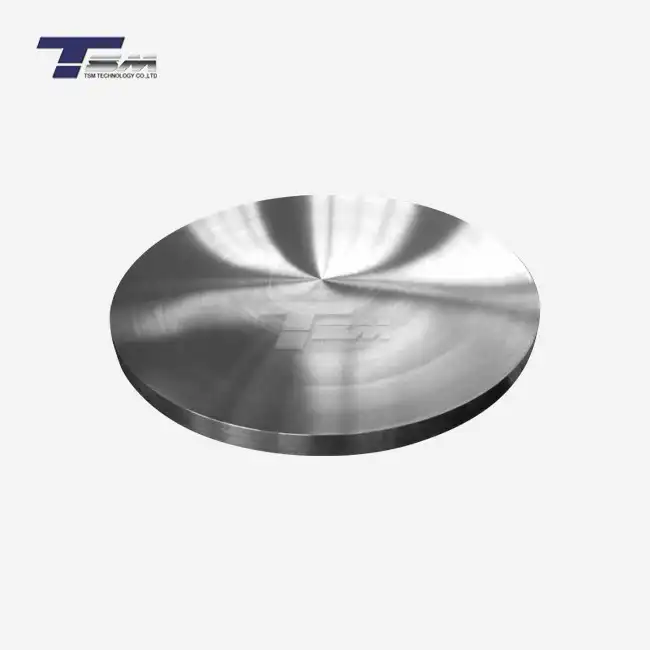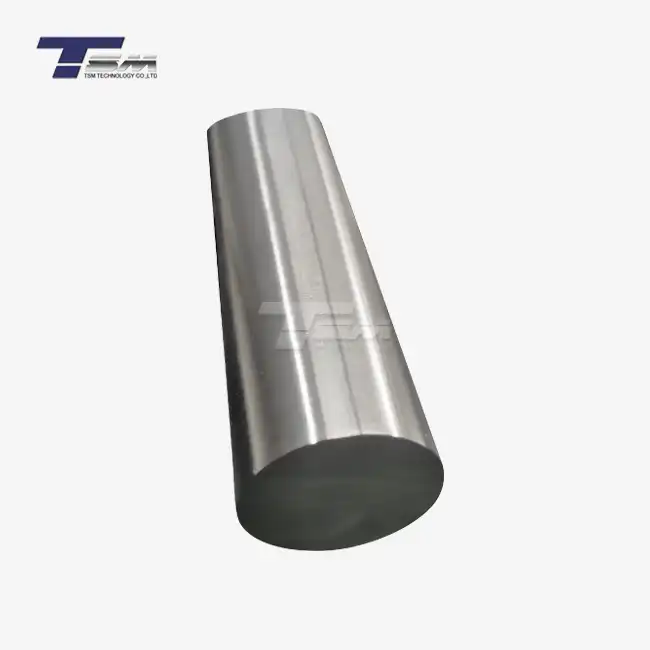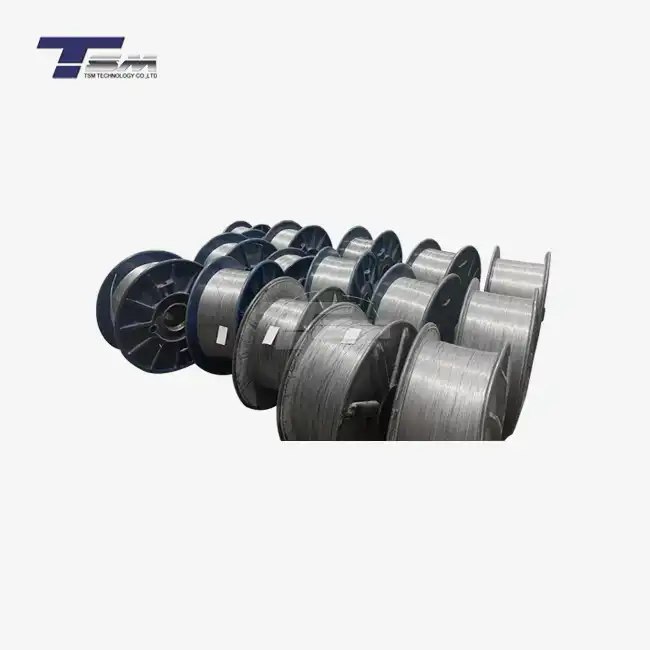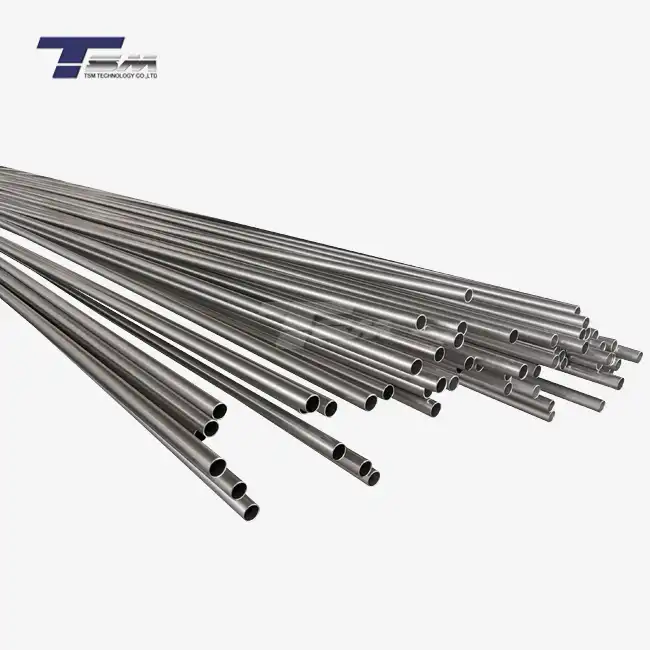Composition and Properties of Inconel 600 and Inconel 625 Round Bars
Chemical Composition: The Foundation of Performance
The chemical makeup of Inconel 600 and Inconel 625 round bars plays a pivotal role in their performance characteristics. Inconel 600, also known as alloy 600, consists primarily of nickel (72% minimum) with significant amounts of chromium (14-17%) and iron (6-10%). This composition grants the alloy 600 round bar its remarkable resistance to oxidation and corrosion, particularly in high-temperature environments. Conversely, Inconel 625 contains a higher percentage of chromium (20-23%) and incorporates molybdenum (8-10%) and niobium (3.15-4.15%), enhancing its strength and resistance to a broader spectrum of corrosive environments.

Mechanical Properties: Strength Under Pressure
The mechanical properties of these alloys differ significantly, influencing their suitability for various applications. Inconel 600 bars exhibit excellent ductility and malleability, making them ideal for fabrication processes. They maintain their strength and toughness across a wide temperature range, from cryogenic to elevated temperatures. Inconel 625 round bars, however, showcase superior tensile and yield strength, thanks to the solid-solution strengthening effect of molybdenum and niobium. This makes Inconel 625 particularly well-suited for applications requiring high mechanical strength under extreme conditions.
Thermal Characteristics: Performance in Heat
Both alloys demonstrate exceptional thermal properties, but with some notable differences. Inconel 600 round bars maintain their structural integrity and resist oxidation at temperatures up to 1100°C (2012°F), making them suitable for high-temperature applications in oxidizing atmospheres. Inconel 625, with its higher chromium content and the addition of molybdenum, offers even greater resistance to oxidation and maintains its strength at temperatures exceeding 1200°C (2192°F). This superior high-temperature performance makes Inconel 625 bars the preferred choice for extremely demanding thermal environments.
Applications and Industries: Where Inconel 600 and 625 Round Bars Excel
Aerospace and Aviation: Reaching New Heights
In the aerospace industry, both Inconel 600 and 625 round bars find critical applications, albeit in different areas. Inconel 600 bars are often utilized in aircraft exhaust systems, where their resistance to high-temperature oxidation is crucial. They're also employed in turbine seals and combustion cans. Inconel 625 round bars, with their superior strength-to-weight ratio and excellent fatigue resistance, are preferred for jet engine components, including turbine shroud rings, thrust reverser systems, and exhaust ducts. The alloy's ability to maintain its properties at extreme temperatures makes it indispensable in rocket propulsion systems and spacecraft components.
Chemical Processing: Corrosion Resistance in Action
The chemical processing industry leverages the unique properties of both alloys extensively. Inconel 600 bars are widely used in reaction vessels, heat exchangers, and piping systems, particularly in processes involving caustic environments or where stress-corrosion cracking is a concern. Their excellent resistance to chloride-ion stress-corrosion cracking makes them invaluable in saltwater applications. Inconel 625 round bars, with their enhanced corrosion resistance, find application in more aggressive chemical environments. They're often used in flue gas desulfurization equipment, acid production plants, and offshore oil and gas processing facilities, where their resistance to pitting and crevice corrosion is paramount.
Energy Sector: Powering the Future
In the energy sector, both alloys play crucial roles in ensuring the efficiency and longevity of power generation equipment. Inconel 600 round bars are commonly used in nuclear power plants for steam generator tubing and control rod drive mechanisms, thanks to their resistance to stress-corrosion cracking in high-purity water environments. In fossil fuel power plants, they're employed in superheater and reheater tubing. Inconel 625 bars, with their superior creep resistance and strength at high temperatures, are preferred for gas turbine components, including combustion chambers and transition ducts. In the emerging field of renewable energy, both alloys contribute to the development of more efficient and durable solar and geothermal power systems.
Fabrication and Welding Considerations for Inconel 600 and 625 Round Bars
Machining Techniques: Precision in Production
Machining Inconel 600 and 625 round bars requires careful consideration due to their work-hardening properties. Inconel 600 bars, while generally easier to machine than 625, still demand sharp, rigid tooling and slower cutting speeds compared to standard steels. Coolants are essential to manage heat buildup during machining. For Inconel 625 round bars, even more robust tooling and specialized techniques are necessary. Carbide or ceramic tooling is often preferred, and techniques like high-pressure coolant delivery can significantly improve machinability. Both alloys benefit from aggressive feed rates to minimize work hardening during cutting operations.
Welding Procedures: Joining with Confidence
Welding Inconel 600 and 625 round bars requires specific procedures to ensure joint integrity and maintain the alloys' desirable properties. Inconel 600 bars can be welded using a variety of methods, including gas tungsten arc welding (GTAW), shielded metal arc welding (SMAW), and gas metal arc welding (GMAW). Pre-weld cleaning is crucial to remove any surface contaminants that could lead to weld defects. Inconel 625 round bars, while also weldable, require more precise control of heat input to prevent hot cracking. Post-weld heat treatment is often recommended for both alloys to relieve stresses and restore corrosion resistance in the heat-affected zone.
Surface Finishing: Enhancing Performance and Aesthetics
Surface finishing of Inconel 600 and 625 round bars can significantly impact their performance and appearance. For Inconel 600 bars, electropolishing is often employed to enhance corrosion resistance by removing surface impurities and creating a smooth, passive layer. Mechanical polishing and buffing can improve surface finish for aesthetic purposes or to meet specific roughness requirements. Inconel 625 round bars may undergo shot peening to improve fatigue resistance, particularly in aerospace applications. Both alloys can benefit from passivation treatments to restore their protective oxide layer after fabrication processes, ensuring optimal corrosion resistance in service.
Conclusion
In the realm of high-performance nickel alloys, Inconel 600 round bar and Inconel 625 round bars stand out for their exceptional properties and versatile applications. While Inconel 600 excels in high-temperature oxidation resistance and stress-corrosion cracking prevention, Inconel 625 offers superior strength and broader corrosion resistance. The choice between these alloys hinges on specific application requirements, including operating temperature, chemical exposure, and mechanical stress levels. By understanding their unique characteristics and fabrication considerations, engineers and designers can make informed decisions to optimize performance and longevity in critical applications across aerospace, chemical processing, and energy sectors.
Contact Us
For expert guidance on selecting the ideal Inconel alloy for your project or to learn more about our superior nickel alloy products, don't hesitate to reach out to TSM TECHNOLOGY. Our team of specialists is ready to assist you in finding the perfect solution for your needs. Contact us at info@tsmnialloy.com to explore how our high-quality Inconel round bars can elevate your next project.



